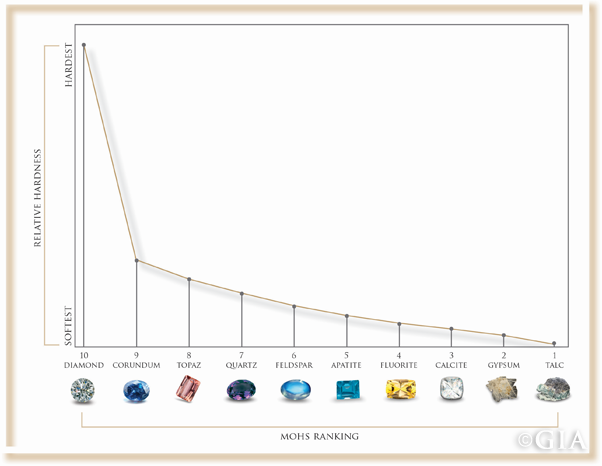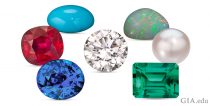Diamonds are known for being one of the hardest substances on earth. A diamond is so hard it ranks as a 10 on the Mohs scale–the highest level of hardness. But what is the Mohs scale?
The Mohs scale (pronounced MOZE) rates the hardness of gems and minerals. The hardness of a stone indicates the stone’s resistance to scratching or how the surface of the gem will respond to contact with a sharp point. This differs from a gem’s toughness, which is defined by how well a gem can survive an impact or resist breaking, chipping or cracking.
Introduced in 1822, the scale originated when Friedrich Mohs chose ten minerals and assigned numbers to them based on the relative ease or difficulty with which one can be scratched by another. His studies resulted in the scale below, which is still used today.
When looking at the Mohs scale, it is important to remember that the difference in hardness between minerals, or the hardness numbers, is not actually equal, even though the minerals look to be equally spaced. The diamond is only one number away from the Corundum mineral (which includes rubies and sapphires), however it is many times harder then the gems in the Corundum family.
The Mohs scale helps to identify how durable a gem is. The more durable a gem is, the more suitable it is for use in frequently worn jewelry.






